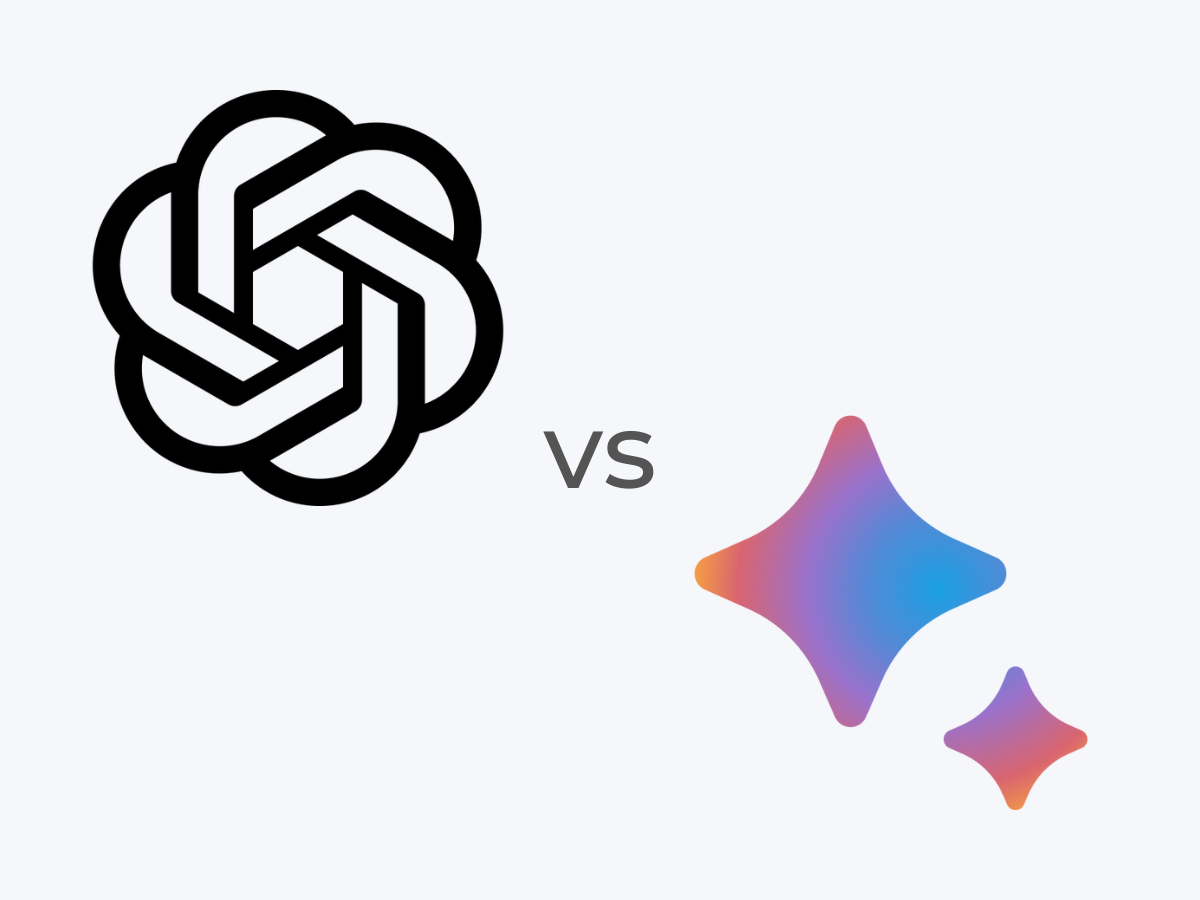ChatGPT and Google Bard are AI chatbots designed to generate responses to prompts. When used appropriately, ChatGPT and Google Bard can be used to support certain business processes in content production, development and more. Take a look at each tool’s features, pros and cons to see which would be best for your business.
Jump to:
- What is ChatGPT?
- What is Google Bard?
- ChatGPT vs. Google Bard: Comparison table
- ChatGPT and Google Bard pricing
- Feature comparison: ChatGPT vs. Google Bard
- ChatGPT pros and cons
- Google Bard pros and cons
- Cautions when using AI chatbots
- Should your organization use ChatGPT or Google Bard?
- Methodology
What is ChatGPT?
ChatGPT is an AI chatbot developed by OpenAI that generates human-like responses based on text input. It has been trained on a huge amount of internet text called a large language model.
What is Google Bard?
Google Bard is another AI chatbot. Like ChatGPT, Google Bard can answer questions and generate text from prompts.
ChatGPT vs. Google Bard: Comparison table
| Features | ChatGPT | Google Bard |
|---|---|---|
| Generates summaries and other text | Yes | Yes |
| Provides conversational responses | Yes | Yes |
| Employs context | Yes | Yes |
| Pricing | Free for the basic version $20 per month for ChatGPT Plus | Free |
ChatGPT and Google Bard pricing
ChatGPT
ChatGPT’s basic version is free, with a limit of 100 questions per day. For $20 per month, ChatGPT Plus gives subscribers faster response times, access to new features and access to GPT-4 (the free version is currently using GPT-3.5). Organizations without a contract with OpenAI can get on a waitlist for access to the ChatGPT API.
Google Bard
Google Bard is free, with an unlimited number of questions. Google’s products have often remained free, since the company mostly profits off of advertising.
Feature comparison: ChatGPT vs. Google Bard
Text generation
ChatGPT and Google Bard are useful tools for producing text –– anything from summaries of information to creating a poem to writing an essay. ChatGPT was trained on text from the internet, and Google Bard was trained on a specific dataset for conversations. This leads some to argue that ChatGPT is better at producing paragraphs and summaries and other text-based processing tasks, while Google Bard is better at conversations.
SEE: Discover how to use Google Bard in your brainstorming sessions.
However, since ChatGPT is based on data that was mostly collected up until 2021, it does not have access to the full range of material on the internet as Google Bard does and, therefore, may produce out-of-date responses. For instance, if your business wants to use ChatGPT to learn about Google Bard, ChatGPT is unable to respond.
Conversational responses
ChatGPT and Google Bard are trained on datasets that include hundreds of billions of parameters, which results in remarkably human-like responses. Further, GPT-4 has over 100 trillion parameters.
However, since Google Bard was trained on data that has instant access to the internet and a more up-to-date library, it can produce more current responses than ChatGPT’s responses. For instance, if asked “what happened yesterday in Budapest?” Google Bard can give several bullet points of news events, whereas ChatGPT comes up empty.
Employs context
ChatGPT collects information from previous conversations and prior interactions with the user, which means it can use context when engaging in a chat. Bard is also able to use context in the conversations, and can also pick up where a user left off.
For instance, if you ask: “What do you think about the new employee description I mentioned the other day?” Bard can respond using the previous cues.
ChatGPT pros and cons
Pros of ChatGPT
- Speedy response times: ChatGPT is superior to previous generations of AI chatbots because of the speed of its responses, which makes it help businesses become more efficient. ChatGPT Plus is faster than Google Bard.
- Ability to generate human-like responses: ChatGPT can produce more natural-sounding text than previous generations of AI chatbots, largely due to the vast amount of data it has been trained on.
- User friendly: ChatGPT can perform a wide range of tasks, from translating to condensing paragraphs to producing song lyrics, and it can do so for a wide audience. Its simple interface and straightforward responses make it an easy tool for those without technical expertise.
- Supports many programming languages: ChatGPT supports Python, JavaScript, Java and a dozen other programming languages.
- Supports 20+ languages: ChatGPT “can understand and generate text” in more than 20 languages.
Cons of ChatGPT
- Limited accuracy and reliability: Chat GPT’s responses may contain errors since it is using training data. It is also not current; the latest update was in September 2021.
- Hidden bias: ChatGPT may produce biased responses due to the dataset it is trained on. The source material itself may contain biases, which can affect the responses offered by ChatGPT. For instance, ChatGPT is not great at answering questions that are not in English and often produces errors.
- No real-world understanding: ChatGPT is limited to the dataset it was trained on, and though it can produce impressive responses, it is based on what is available online, not what has been learned through real human experience.
Google Bard pros and cons
Pros of Google Bard
- High-quality text generation: Google Bard can produce human-like text that can be used for a range of tasks, from answering queries to summarizing material to translating text.
- Large dataset: Google Bard is pretrained on a massive dataset of text and code, which allows it to generate more comprehensive and informative responses than smaller models.
- Creative text output: Google Bard can assist in creating a variety of text, from job descriptions to hiring letters to writing reports, which makes it a versatile tool for the enterprise.
- Write code in many programming languages: Google claims that Bard can generate code for simple and complex tasks alike in several programming languages, even from prompts written in natural language.
- Language support: Bard supports U.S. English, Japanese and Korean and can translate other languages.
Cons of Google Bard
- Computational resources: Large transformer models use a lot of computational resources.
SEE: How to use Google Bard (2023): A comprehensive guide
Cautions when using AI chatbots
ChatGPT and Google Bard are still in development and may contain errors or biases. Therefore, users should be critical of the information provided by ChatGPT and Google Bard to ensure its accuracy.
In addition, there are privacy concerns that come along with using ChatGPT or Google Bard, which collect personal information in the same way search engines do. Your IP address, text and even links to your information like phone, email and social media can be gathered.
Should your organization use ChatGPT or Google Bard?
ChatGPT and Google Bard are free — unless you opt for the paid ChatGPT Plus — and both AI chatbots are trained on large natural language models, meaning their responses tend to be similar.
Google Bard has several features that help it stand out. For one, you can get “draft” versions of the response, which offers a variety of responses. Further, Google Bard is completely up-to-date, with access to online information.
ChatGPT, on the other hand, is based on data up to September 2021.
It’s important to remember that both AI chatbots can be prone to error and bias and collect your personal data — not just the information you input — and can be tools of misuse for bad actors. Learn more about how generative AI works along with its benefits and dangers.
Methodology
We evaluated these products based on the free version of ChatGPT and Google Bard, which is free by default. We tested out how the two AI chatbots would answer the same questions, and we asked ChatGPT and Google Bard about more current news items to test the limitations.







